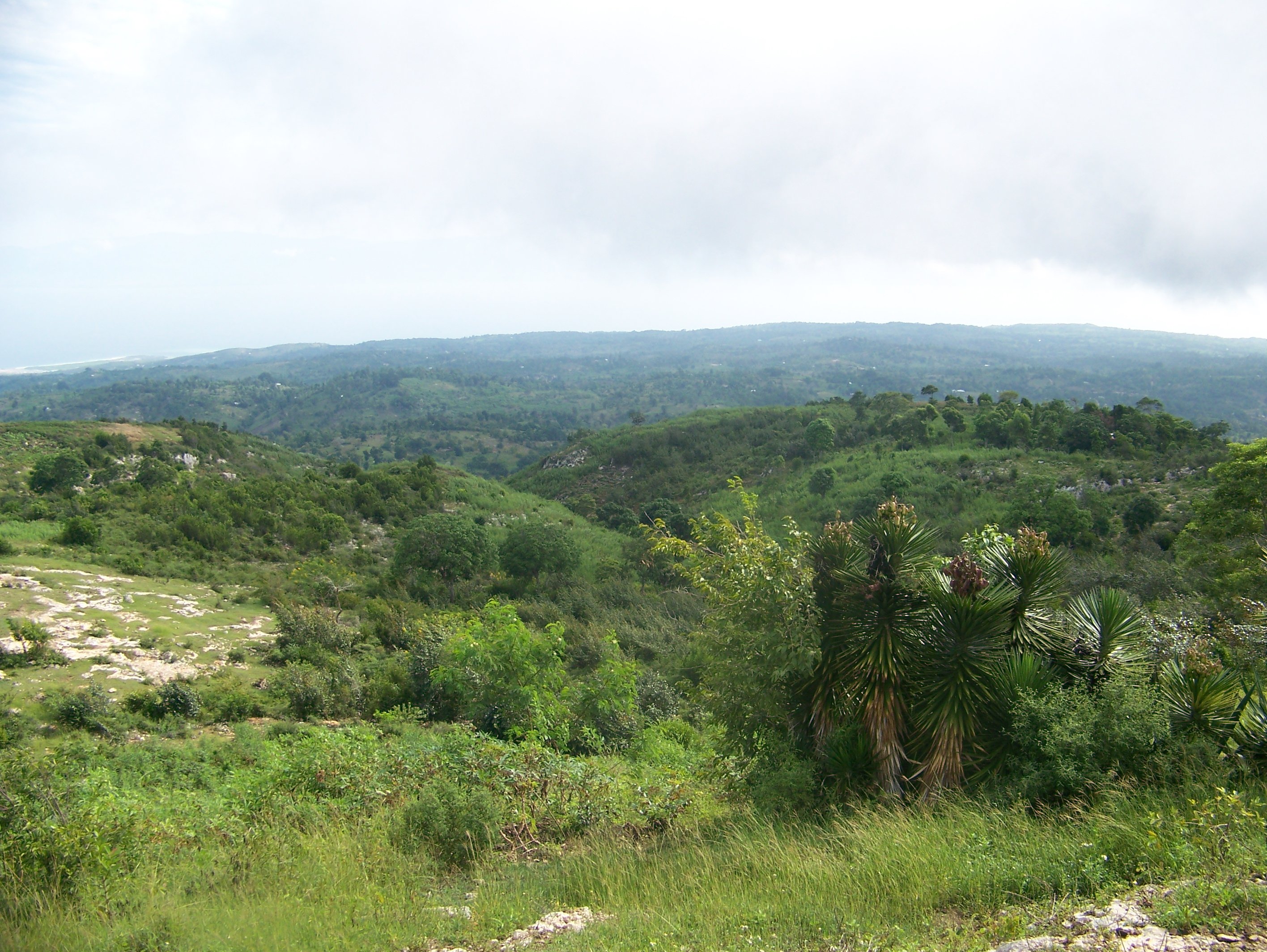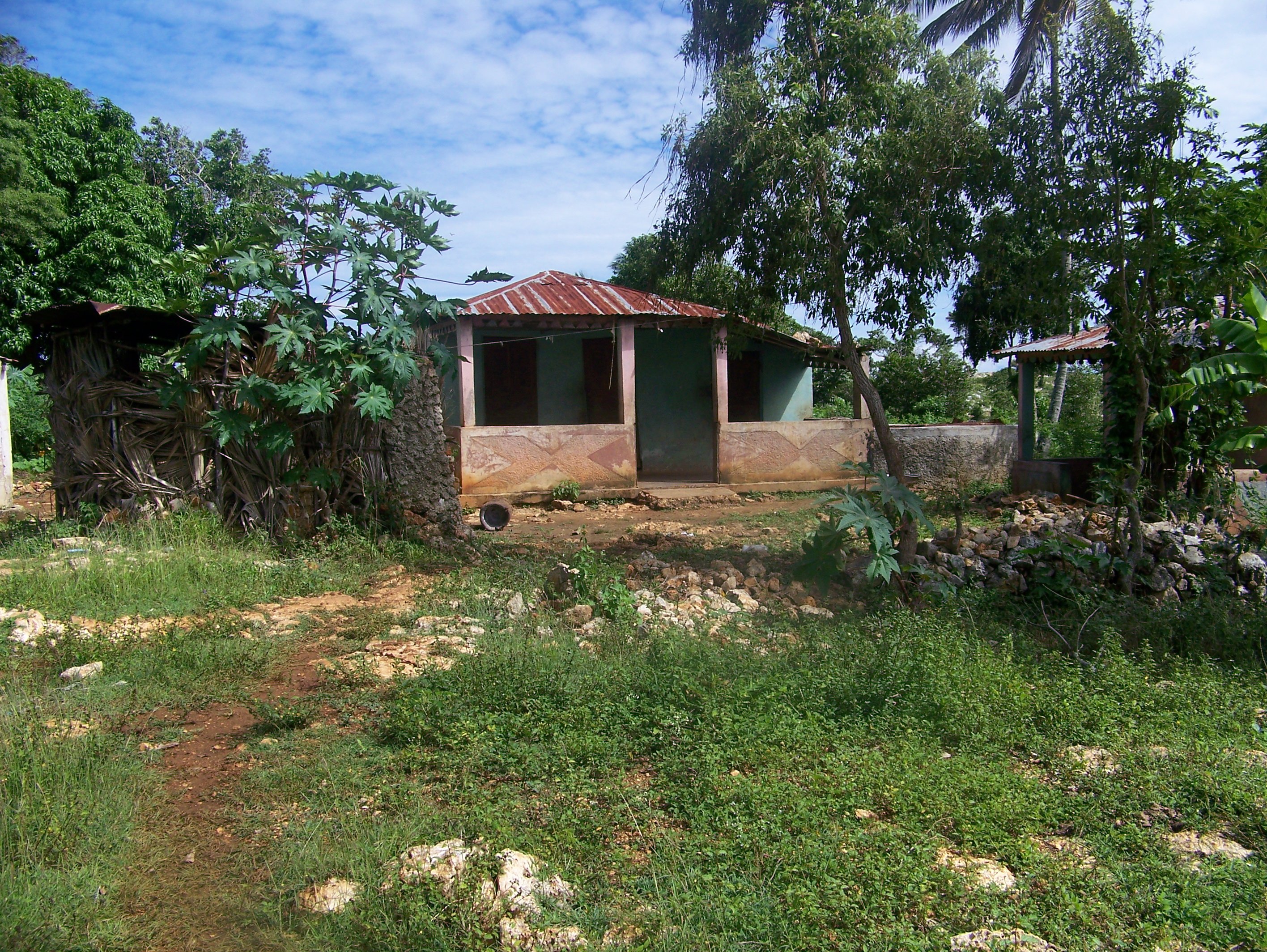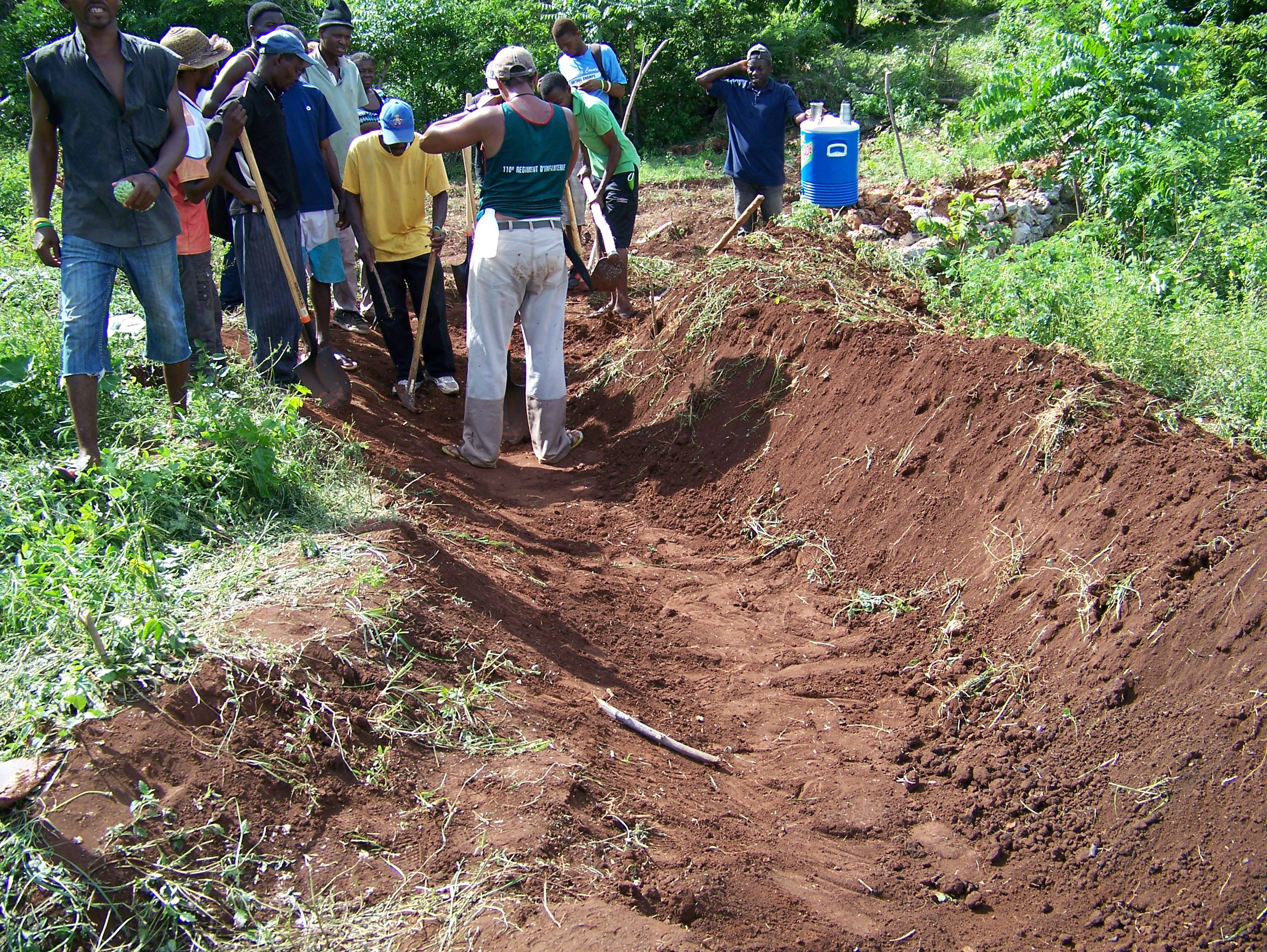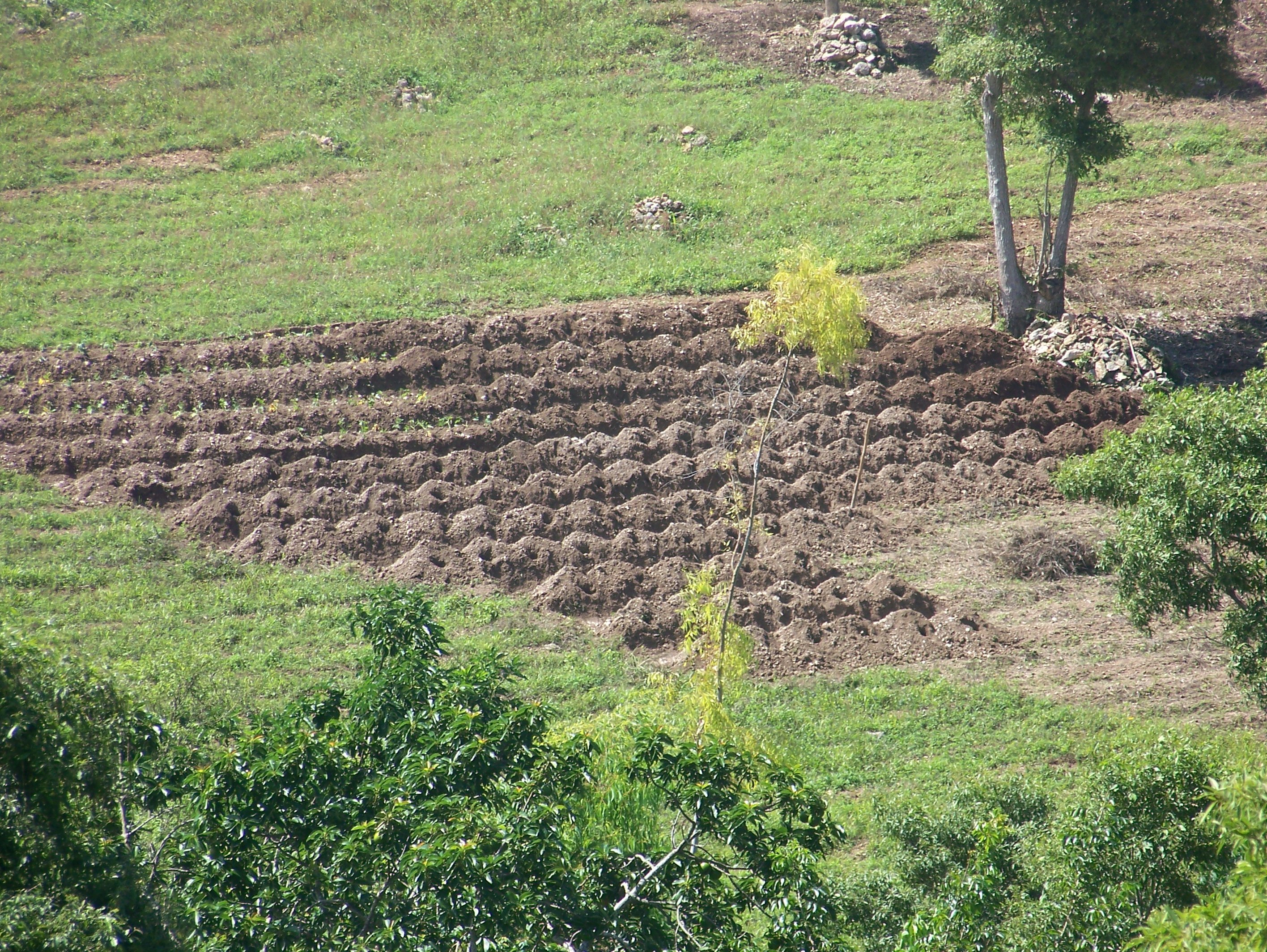As I pointed out early in this series, and as I hope I’ve conveyed with my descriptions and pictures, the needs in Haiti are overwhelming. There’s simply more to do than any one person or organization is equipped to handle. Many have tried, pouring millions into the country, with short-term relief coming, but not enough long-term solutions.

From the top of Happy Dog
Much of this is changing, such as with the Mud n Guts (previous article in this series) guys who are digging wells. But even that’s not sustainable if the water table drops significantly enough. It’s certainly not regenerative. Others have built homes and other structures to help with more of a long-term perspective.
Generally, these efforts are wonderful but still limited in their effectiveness. What if you could go beyond providing the relief by helping to provide the means for the Haitians to provide their own relief?
The Problem is the Solution
One of the mantras of permaculture is that the problem is the solution.
We’re all wired differently. Someone who is super emotionally compassionate might see the suffering and want to relieve it right now. That is certainly needed. These people are wonderful and it’s awesome to be in their presence and part of their effort. They feed the hungry, mend wounds and strive to get hurting people through the day. A young woman who visited La Gonâve a couple months after I did was like that. She wept often at what she witnessed.
Others may be compassionate, but tend to be analytical and focused more on the root of issues. I fall into this category. The suffering needs relief. But, what is at the root of the issue? Why is this happening? If I can find that problem, then perhaps I can find a solution that gets to the heart of many problems.
What are the clear issues we see?
- Poverty (which leads to a host of other issues)
- Illness – lack of good medical treatment (hygien is actually good there)
- Hunger – In a land with good natural resources for growing, this would seem avoidable
- Water – The desertification of the island – It will never dry out completely because they get great seasonal rain, but with 50” of rain a year, the island should be thriving.
- Employment – How do you hire people or buy from them when you’re literally living hand to mouth?
- Degenerative land
- Loss of vegetation
- Need for education – While it’s available and inexpensive by our standards, it’s difficult to afford for many of Haiti’s families, perhaps more so on La Gonâve.
- Infrastructure – Even what’s available is dilapidated and difficult to maintain with such limited funds. For example, electricity is on for only about six hours a day, from around 6pm to midnight. Roads in the mountains are terrible. There is no real water source, though some do have cisterns.

So how do we overcome this? What is the solution that can tick the most boxes? What has the longest lasting implications? Can we pursue a course that will improve most or even all of these over time, setting them on a path of regenerative growth?
I think we can. It will take hard work and excellent cooperation. It’ll take a great vision. But, on the other hand, it’s not rocket science. While the biological responses are quite complex, triggering them is not. It’s a matter of structure and strategic planning – earthworks and complementary plantings.

What if we could work to shape the land along the ridges so that they held more water? Then we could grow more crops, which in turn would help the land retain more water. We’d grow trees in strategic configurations to help promote the retention of water and more abundant provision. This would help cool the peaks too, promoting rainfall and mist retention along the ridges. This, in turn, would raise the water table and reduce downhill degradation. Here is a short video explaining relief rainfall and the orographic effect.
How many boxes did we just tick off?
- Increase water retention
- Increase vegetation
- Help decrease hunger
- Increase health
- Reduce, halt or even reverse the degradation of the land
But, what about the other issues? How can we fix them?
What if we focused on crops that could be sold commercially? Avocados, coconuts, guavas and mangoes already grow wonderfully in Haiti. Moringa does too, and the oil is very valuable, as is avocado oil. Some crops, like coffee, will grow well but might not bring the premium value since the peaks are a little over 800 meters (2500’) above sea level. But there are many more cash-crops that will grow wonderfully in Haiti, some of which will grow year-round in the tropics.
Other crops will help provide sustenance for the island and become available in the local economy. A lot of crops won’t store or ship well, so they’d need to be consumed locally or perhaps on the mainland. The increase in produce available locally should stimulate at least some jobs as well.
As the vegetation increases, and if we were to pursue regenerative planned grazing, then more livestock could be grown as well. This would give birth to more export opportunities as well as additional sustenance for the islanders and more possible employment.
A few employment possibilities include:
- Transportation
- Processing/packaging
- Market sales
- Export handling/services
- Artisan Crafts (hides, fibers, cloths, etc)
- Exploration into various cottage industries – Cheese, meat products, dried fruit, etc.
- Tourism – agrotourism, volunteer work and even vacation destination as the island matures
Increased productivity and income would generate a need for improved infrastructure, as well as funding to be able to pay for it. This, in turn, will help improve the others through greater efficiency.
Now how many boxes did we potentially tick? All of them, right?
See how the problem became the solution? The degraded land itself has the potential to relieve a great deal of the difficulty in the lives of the islanders. If it is improved, from the top down, then the plight of the people of La Gonâve could be relieved in multiple levels.
Trickle Down Restoration – It’s Real
Why the top down? We’ll get into that in more detail tomorrow, but it gets back to the desiccating effect we discussed in the first couple of articles in this series. I’ll offer a simple illustration today.
If a region keeps flooding, what is often the answer? It is to build a dam or dyke right, and hold back as much of the water as possible? Does that help what’s happening to the land above the holding basin though?
What if we put small dams just below the peaks, just as the valleys are forming? What if we put in swales and conversion ditches to slow the water mid-slope? What if we strategically locate dams are keypoints in every valley? What if we put in more very small dams in these little valleys as we go down?

Source
Can you envision it? Each of these little dams slows down the flow, decreasing the erosion and storing water up high. As water is stored up high, it has the opportunity to soak into the ground, replenishing the water table. However, it doesn’t have the opportunity to build up speed and erode on the way down. As flow is slowed and the water table comes up, the vegetation is able to thrive. As the vegetation thrives, the soil holds more water, increasing the productivity of the region on every level.
Working from the top down is proactive. When we work from the bottom up, we’re always reacting to what’s happening above us. But when we start at the top, we’re actually improving conditions at the bottom through natural regenerative processes. If done well, even passably well, dams and dykes in the lower valleys can become obsolete. The flow simply never becomes great enough to require them.
This is why I want to start at Happy Dog. If we can get landowners there to cooperate, then the hope is that the vision will spread across the peaks and downhill as the land on the peaks visibly regenerates. This is not theoretical. It is being done in some places already, with incredible results. We’ll get into that in more detail tomorrow as I outline the regenerative design more fully.

There is no such thing as reaching too high. The Urban Farming Guys started with a dream and vision to change one of the most dilapidated and crime ridden neighborhood in the Lykins Neighborhood, Kansas City, Missouri. Their vision has grown before their previous dream farther than they’d dare to reach. They had help with marketing and the right people showing up to help make it happen.
Tomorrow I’ll include a video of an amazing transformation that took place in Brazil. How much can be done on La Gonâve? What can I do? Is there enough shared vision and interest to make it a reality? I’m just an average Another Joe. But I have a vision that’s beyond my reach right now. We’ll see what happens.
Steemin' on,
Another Joe

Email notifications
Facebook
Twitter


